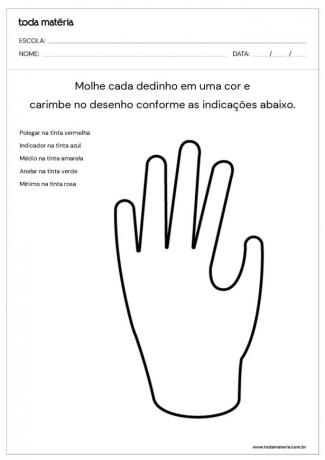To do a school work, the first thing you need to do is ensure that you know how to structure it, that is, know what its parts are and what each of them needs to contain.
Good school work has 6 essential parts:
- Cover;
- Summary;
- Introduction;
- Development;
- Conclusion;
- Bibliography.
1. Cover: identification
The cover is the identification of the work. It must contain:
- name of student or students, if it is a group work
- school name
- job title
- teacher name and subject
- date
2. Summary: structure
The summary shows how the work was structured, indicating the pages of each of its parts.
Remembering that the page number should not be printed on the summary sheet. The pages should only be printed after the introduction.
Although some people use the index to do this and confuse the two, the index is actually the list of topics covered in the work. These themes are listed in alphabetical order and are accompanied by the page number where the theme is located.
So, in a school assignment, what we use to locate a specific piece of work is the summary.
3. Introduction: definition of objectives
The introduction is a short text that should indicate the subject covered in the work, as well as explain its objective.
Despite being one of the initial parts of the work, the introduction should be written after your completion, because that's the only way you'll ensure that you didn't forget to insert anything you contemplated in your development.
Leaving to write the introduction at the end also avoids the mistake of mentioning something you decided not to write about later.
4. Development: the work itself
Development contains the work itself. It is in this part that you should write down what you learned from the research you carried out in order to meet the work proposal requested by the teacher.
Before starting, think carefully about the topic, do research, read and plan the structure of your work. Only after assembling the structure, start writing.
Do not make copies of books or other sources consulted. Based on the research you carried out, write your own text. Pay attention to writing a cohesive, coherent and error-free text in Portuguese.
5. Conclusion: final result
The conclusion concludes the work, highlighting your main ideas. It should indicate what considerations were taken as a result of the research that was carried out.
Brief as the introduction text, in this part, the objective of the work should be resumed, indicating if the same was achieved, what was learned, if the topic is comprehensive and what other research could be made.
6. Bibliography: researched sources
The bibliography contains the list of material consulted for the elaboration of the work - books, newspapers, magazines, websites.
How to make the bibliography?
To make the bibliography, you must indicate the elements necessary for its identification as follows:
Author's last surname in capital letters, first name and other surnames. Title in bold, italics or italics. Edition (if any). City of publication: Publisher, date.
Example: BOSI, Alfredo. Concise History of Brazilian Literature. 38. ed. São Paulo: Cultrix, 1994.
Remembering that after identifying the consulted sources, they must be inserted in the bibliography in alphabetical order.
To learn more about each element of the bibliography, read Bibliography: what is it and how to do it?


